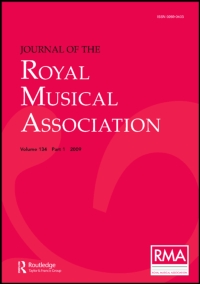Article contents
On the Determination of Absolute Pitch by the Common Harmonium
Published online by Cambridge University Press: 01 January 2020
Extract
The method of determining absolute pitch, to which I shall ask your attention this afternoon, does not pretend to compete in point of accuracy or completeness with some of the other methods which have been employed, particularly in the last few years, with success. But I think it stands alone in the extreme simplicity and general availability of the means which it employs. Of course to determine the pitch of a note you must have the note, and you must also have some standard of time. I hardly want more than that. All that is necessary is two notes on the harmonium, and a watch, and by those means alone I am able to say how many vibrations in a second the notes make. To carry out the observations with ease requires a little more in the way of instrumental assistance, but the feasibility of the method does not at all depend upon this extra assistance.
- Type
- Research Article
- Information
- Copyright
- Copyright © Royal Musical Association, 1878
References
∗ In its algebraical form the calculation is as follows. If x and y be the frequencies of the notes, a and b the frequencies of the beats:Google Scholar

∗ On referring to my record of this experiment, I find that the two pipes spoke together a note three commas below the lowest of the two pipes as they stood.—R. H. M. B.Google Scholar
- 1
- Cited by


